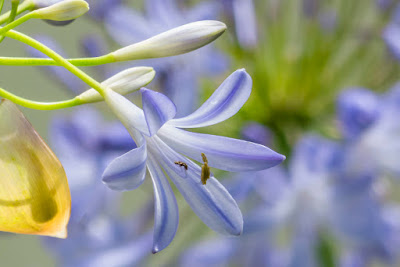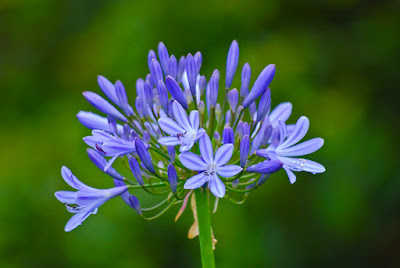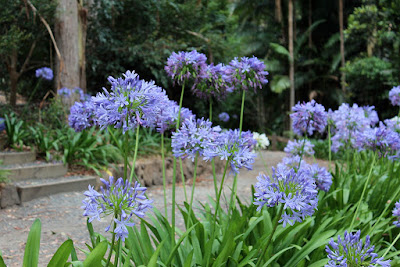Agapanthus praecox is a variable species with open-faced flowers and is divided into three subspecies: Agapanthus praecox subsp. minimus, Agapanthus praecox subsp. orientalis and Agapanthus praecox subsp. praecox.
Agapanthus praecox also called as Common agapanthus, Blue lily, African lily, Lily of the Nile, is a species of the genus Agapanthus. This species was described by Carl Ludwig von Willdenow in 1809.
IDENTIFY AGAPANTHUS PRAECOX PLANT
Agapanthus praecox is a evergreens, variable species with open-faced flowers and is divided into three subspecies: Agapanthus praecox subsp. minimus, Agapanthus praecox subsp. orientalis and Agapanthus praecox subsp. praecox.
Agapanthus praecox subsp. praecox occurs in Eastern Cape province of South Africa. It usually grows to between 0.8 and 1 meter tall and has 10-11 leathery leaves. The blue flowers, appear from December to February. These have perianth segments which are greater than 50 mm in length.
Agapanthus praecox subsp. orientalis occurs in Eastern Cape and southern KwaZulu-Natal. Although it is about the same height as subsp. praecox, it has up to 20 poisonous, strap-like leaves per plant which are arching and are not leathery. These range in length from 20 to 70 cm long and 3 to 5 cm wide. Flower colour ranges from blue to white. Shiny black seeds are produced in three-sided capsules. These have perianth segments which are less than 50 mm in length.
Agapanthus praecox subsp. minimus occurs in the southeastern Western Cape and Eastern Cape, this subspecies is the smallest, ranging in height from 300 to 600 mm. It has a longer flowering season, from November to March. Flower colour includes white and various shades of blue.
AGAPANTHUS PRAECOX PLANT CARE AND CULTURE
Cultural information should only be used as a guide, and should be to be adapted to suit you. Your physical location; where you grow your plants, how much time you have to devote to their care, and many other factors, will need to be taken into account. Only then can you decide on the cultural methods that best suit you and your plants.
Light:
Agapanthus praecox is a plant that is highly tolerant and adaptable within its natural range of spreading. There it is found at an altitude that starts from the sea level and reaches up to 2000 m. In areas where the upper temperature limit is rarely between 38 and 40 °C, it is recommended to plant in places that receive direct sunlight. On the contrary, in areas where the temperature often exceeds 40 °C, it is preferable to plant in semi-shady places.
Temperature:
A suitable climate for Common agapanthus's development is that of tropical and subtropical regions - however, in subtropical areas it only develops where the temperature does not fall below 0 to -1 °C. Of course, fully established plants can withstand somewhat lower temperatures for a short time.
Substrate and growing media:
Blue lily grows in almost all the soil types except those which are permanently fluid. However, it thrives in deep, moderate fertility and medium textured soils that contain an abundant organic substance, while in terms of pH, those with a slightly acidic to slightly alkaline reaction.
Watering:
African lily reacts positively to summer watering - one to two per week. Watering is done if the soil has dried to a depth of 6 to 8 cm. In spring and autumn, watering, both in quantity and frequency, is less, while the ideal condition is the minimum or total absence of rain in the winter.
Fertilizer:
The addition of an organic substance on a yearly basis favors the growth of Lily of the Nile. Also favorable is fertilization during the growing period with the application of fertilizer after the first 10 days of March and on a monthly basis until the end of August to mid September. Fertilization is mainly carried out using fertilizer containing the main nutrients N-P-K in a 1: 1: 1.5 ratio.
Propagation:
Agapanthus praecox are best lifted and divided every four years or so to ensure flowering. The plant can be propagated by fresh seed. The seed germinates best if sown in a well-drained seed mix and lightly covered. The seed trays should be placed on heated beds under a mist spray set for about 5 minutes twice a day. Germination takes place in 4-6 weeks and the trays should then be removed to a lightly shaded area. Good results will also be obtained when the trays are placed indoors or outdoors in light shade and watered twice a day, provided the day time temperature is higher than 18° C.















COMMENTS